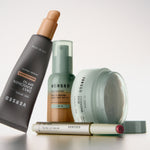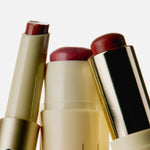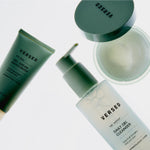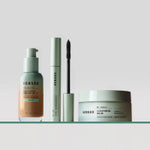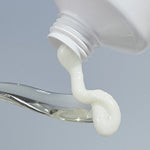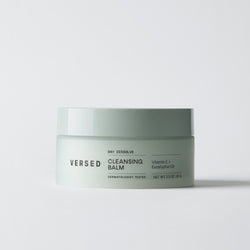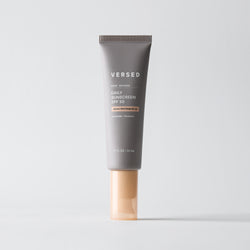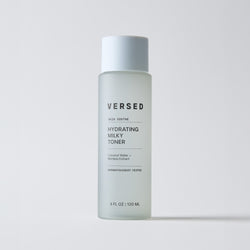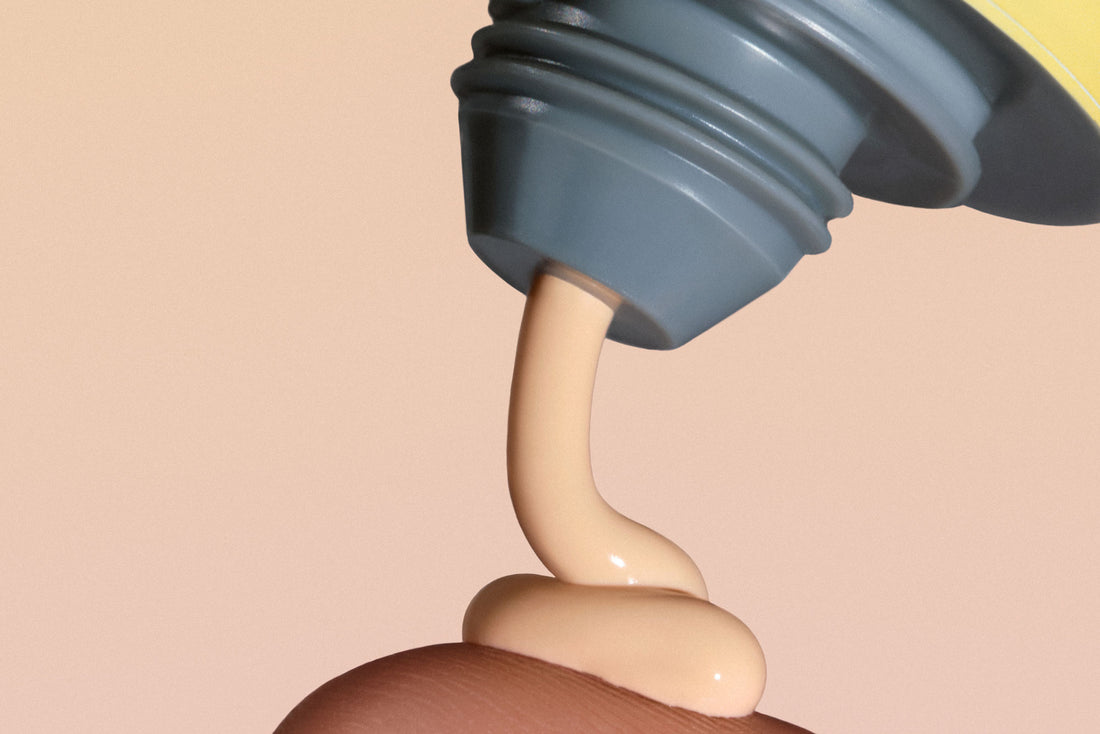Fact: Everyone needs sunscreen; no ifs, ands, or buts about it. Sunscreen is key to protecting our skin from harmful damage—from sunlight to blue light to pollution—that can cause cancer, premature aging, and more. It’s been around since ancient times, yet many people are still hesitant to incorporate it into their daily skincare routine because of some major misconceptions that have been floating around for a few years.
That’s why we asked Tamerri Ater, our Senior Product Development Director, to debunk four of the most common myths surrounding sunscreen once and for all. She even drops some gems on the best ingredients to look for in a sunscreen, the ideal SPF, and how to properly apply it for all-day protection.
Myth: Chemical sunscreen is better than mineral because it doesn’t leave a white cast.
Tamerri: There are two types of sunscreens: chemical and physical (although some products use a blend of both). Chemical sunscreen sinks into the skin, absorbs UV rays, converts them into heat, then releases them before they can cause any damage. Physical sunscreen (also called mineral sunscreen) sits on top of the skin to form a protective barrier. Instead of being absorbed, UV rays bounce off the skin’s surface. It’s hard to say which type is “better” as that depends on what you value most in an SPF.
Physical sunscreens are pregnancy-safe and typically better at preventing irritation, especially if you have sensitive skin. Also, there are additives in some chemical sunscreens that are detrimental to marine life. When we created our sunscreen, Guards Up, we decided to go the physical route not only for the environment but for skin safety.
Physical sunscreens are usually made with titanium dioxide or non-nano zinc oxide—the safest SPF active available for our bodies and our oceans. Bonus: Zinc oxide also protects against blue light damage from screentime. However, the issue is that this mineral is naturally white. That’s why a white cast can sometimes show up on darker skin tones and those with more melanin in their skin, like myself.
We really wanted a physical sunscreen that worked for everybody which is why ours has a peach hue that disappears as it's rubbed into skin. We tested our formula on our community to ensure that it worked for a wide range of skin tones.
Myth: I have a darker complexion so I don’t need sunscreen.
Tamerri: While melanin does naturally protect the skin, you definitely want to apply sunscreen even if you have a darker skin tone. Those who are rich in melanin may not burn as easily, but that doesn’t mean it can’t happen. Plus, sun damage (which can cause premature aging and dark spots) happens to all unprotected skin, even if you aren’t physically burning.
The idea that Black people can’t get skin cancer is also a misconception. It may be less prevalent among darker skin tones, but when it does happen it’s more severe. Bottom line: Wearing sunscreen is super important—for everyone.
Myth: My makeup has SPF in it, so I don’t have to apply sunscreen.
Tamerri: It’s great that makeup brands have started to incorporate sunscreen into their formulas, but I don’t suggest relying on your SPF-infused foundation as a replacement for sunscreen. The AAD recommends wearing daily sunscreen with an SPF of 30 or higher. The lower the SPF, the less amount of time skin is protected, meaning you’ll need to apply more frequently to avoid damage. However, the real issue with relying on your makeup for your sun protection is amount. The amount of sunscreen you need to be properly protected is way more than the amount of foundation you use. Plus, experts say that mixing sunscreen with makeup dilutes its strength even further, making it not the best form of protection.
If you prefer SPF-infused makeup, my recommendation would be to wear both foundation (or better yet, opt for something that moisturizes and diffuses imperfections instead, like our Luminizing Glow Drops) and sunscreen so that you're getting maximum protection. If your foundation doesn't have any SPF, you should definitely put sunscreen on as the last step in your skincare routine—whether you apply makeup afterward or not. Just give it a few minutes to sink in to avoid any pilling.
Myth: You don’t need sun protection during the wintertime.
Tamerri: Everyone should use sunscreen every single day no matter the season or weather. The sun’s UVB rays (the ones responsible for burning) are more prevalent during the summertime, but UVA rays (which cause premature aging) are present year-round. They can penetrate clouds and glass windows and reflect off of snow so, even if it’s cold and dreary outside or you’re staying indoors, you still need sun protection.
Don’t think you’re off the hook when it comes to reapplying, too. The Skin Cancer Foundation warns that harsh winds and snowy weather can wear away your sunscreen and reduce its effectiveness so, even during the wintertime, you should still reapply every two hours. To up your sunscreen’s protective abilities, incorporate antioxidants like ferulic acid and phloretin into your daytime routine.
Myth: Sunscreen is bad for my skin because it causes irritation and breakouts.
Tamerri: Everyone's skin is different. Like anything you put on your face, it’s important to patch test on a small area of skin (like beneath your ear) before applying it all over. And like any other ingredient, some people can be sensitive to zinc oxide and ingredients in chemical sunscreen like oxybenzone, avobenzone, homosalate…
If sunscreen is causing you to break out, it may just not mesh well with your skin type. Acne-prone skin typically fares better with an oil-free formula. Make sure the product is actually what’s causing your breakouts (don’t forget that stress, not washing your pillowcases, diet, and touching your face can cause acne, too) before giving up on it completely. (And spot treat any pimples that do pop up with a drying treatment, like Game Over.)
Once you find a sunscreen that works for you, make sure you’re using enough (about ½ a teaspoon daily) and reapplying every two hours.
